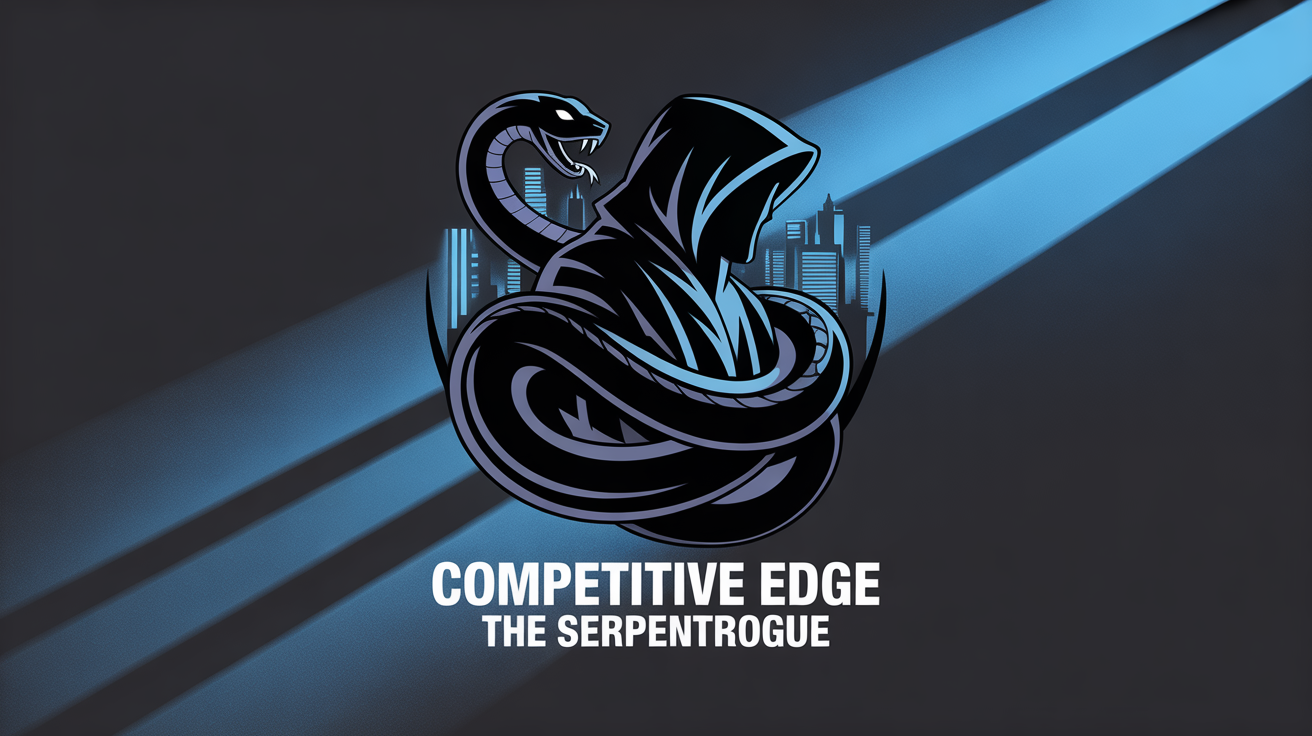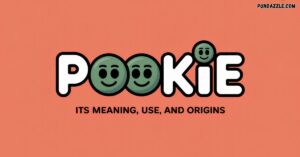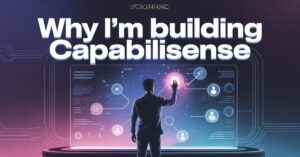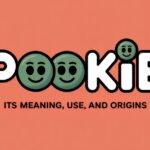The business landscape shifts faster than ever. Markets crumble overnight. Technologies disrupt entire industries within months.
Traditional strategic planning rigid, linear, inflexible fails spectacularly in this chaos.
Enter Competitive Edge The SerpentRogue: a revolutionary framework blending strategic adaptability with surgical precision.
This isn’t motivational fluff. It’s a battle-tested approach rooted in military strategy, game theory, and modern organizational agility.
Think of a serpent calculated, patient, striking with lethal accuracy. Now imagine a rogue unconventional, rule-bending, perpetually evolving.
That’s the essence of this competitive advantage philosophy.
The SerpentRogue Philosophy Decoded
Competitive Edge The SerpentRogue represents a paradigm shift from traditional strategic thinking.
Where conventional frameworks demand extensive planning and rigid execution, the SerpentRogue Mindset embraces fluidity without sacrificing focus.
The philosophy rests on three non-negotiable pillars:
Precision in every decision. Not perfectionism that paralyzes. Precision means making 70% confident decisions rapidly, then adjusting based on feedback.
Companies like Netflix exemplify this: they pivoted from DVD rentals to streaming not because they had perfect information, but because they made precise bets with available data.
Adaptability that responds to reality. Amazon didn’t become a trillion-dollar empire by sticking to books.
Their strategic flexibility allowed them to dominate cloud computing, streaming, and logistics. They read market signals and pivoted ruthlessly.
Resilience built through systems, not willpower. IBM survived multiple technological revolutions from mainframes to personal computers to cloud services because they constructed resilient business models that could absorb failure and evolve.
Historical Context: Where This Thinking Originated
The SerpentRogue concept didn’t emerge from a boardroom brainstorming session. Its roots stretch back centuries.
Ancient military strategist Sun Tzu wrote: “In the midst of chaos, there is also opportunity.” His Art of War emphasized adaptive problem solving over brute force.
Modern special forces units apply identical principles mission success depends on reading terrain, adapting tactics mid-operation, and executing with deadly precision.
Game theory during the Cold War refined these concepts further. Analysts developed frameworks for making strategic decisions under uncertainty, with incomplete information, against adaptive adversaries.
The OODA loop (Observe, Orient, Decide, Act) became foundational to dynamic strategy execution.
Today’s gaming industry validates these principles daily. Professional esports athletes in games like Overwatch demonstrate the SerpentRogue Mindset constantly reading opponent patterns, adapting strategies mid-match, executing with mechanical precision, and maintaining mental strength through high-pressure tournaments.
Core Pillars: What Actually Makes This Work
Precision-Driven Decision Architecture
Decision-making precision separates winners from strugglers. The difference? Winners act decisively with 70% information. Strugglers wait for 100% certainty that never arrives.
Implement the 70% rule: gather enough data to be directionally correct, then execute.
Google famously launches products in beta, gathers real-world feedback, and iterates rapidly. Their precision-based decision framework prioritizes learning velocity over false certainty.
Key frameworks for strategic decision-making:
- Risk-weighted analysis: Assign probability scores to outcomes, multiply by impact, compare options numerically
- Time-boxing decisions: Set decision deadlines based on reversibility (reversible decisions get 24 hours, irreversible get 72)
- Kill criteria: Define failure metrics upfront if Strategy X doesn’t achieve Y by Z date, abandon it
Data-driven insights fuel precision. Tools like Google Analytics, Tableau, and even Excel transform guesswork into calculated moves.
Track key performance indicators (KPIs) that actually predict success, not vanity metrics that feel good but mean nothing.
Adaptive Intelligence: Reading and Responding to Shifts
Strategic adaptability requires distinguishing signal from noise. Markets flood you with information. Most of it’s garbage.
Build feedback loops that matter:
| Feedback Type | Review Frequency | Action Threshold |
|---|---|---|
| Customer sentiment | Weekly | 15% shift in any direction |
| Financial metrics | Monthly | 10% variance from projection |
| Competitive intelligence | Quarterly | New entrant or major pivot by competitor |
| Technology trends | Quarterly | Emerging tech reaches 5% market adoption |
Agile methodologies like Scrum and Kanban originated in software but apply everywhere. Break strategies into sprints. Review.
Adapt. The continuous evolution model beats five-year plans every time.
IBM nearly collapsed in the early 1990s. Their mainframe business crumbled as personal computers exploded. Lou Gerstner became CEO in 1993 and implemented radical organizational agility.
He sold underperforming divisions, invested in services, and positioned IBM for the internet era. This strategic transformation saved the company.
Resilient Systems Over Willpower
Willpower depletes. Systems endure.
Resilience building means designing strategies that tolerate failure. Netflix tests new content constantly.
Most shows fail. But their system for greenlighting, testing, and killing underperformers ensures the winners offset the losers massively.
Psychological resilience techniques backed by research:
- Stress inoculation training: Deliberately expose yourself to manageable stressors to build tolerance
- Cognitive reframing: When setbacks occur, ask “What can I learn?” instead of “Why did this happen to me?“
- Recovery protocols: After failures, implement structured reflection processes, not emotional spirals
Mindfulness practices enhance mental resilience. Studies show regular meditation improves decision quality under pressure by 23%.
That’s not mystical it’s neurological. Mindfulness strengthens prefrontal cortex function, improving emotional regulation and reducing reactive decisions.
SerpentRogue Applications: Domain-Specific Playbooks
Business Strategy and Organizational Excellence
Strategic agility in business separates market leaders from casualties.
Competitive intelligence informs every move. Analyze competitors not to copy them, but to identify exploitable gaps.
SWOT analysis remains powerful when executed rigorously most companies treat it as a checkbox exercise instead of genuine strategic inquiry.
Amazon obsesses over competitors. Jeff Bezos famously said: “Your margin is my opportunity.”
That mindset drove Amazon Web Services they saw bloated IT infrastructure costs across industries and built a solution that now generates $90 billion annually.
Cross-functional teams accelerate innovation culture. Silos kill adaptability. When engineering, marketing, and sales operate independently, market shifts slip through the cracks.
Companies like Google structure teams around problems, not departments, enabling faster change adaptation techniques.
Scenario planning prepares you for multiple futures. Don’t predict the future prepare for several plausible ones.
Shell Oil pioneered this in the 1970s, creating scenarios for various oil price trajectories. When the 1973 oil crisis hit, they adapted faster than competitors because they’d already strategized responses.
Gaming and Tactical Mastery
The gaming industry offers pure, distilled strategic adaptability. Esports professionals demonstrate tactical mastery under extreme pressure.
Overwatch League players exemplify the SerpentRogue Mindset:
- They analyze opponent play styles within seconds
- They adapt team compositions mid-match based on opponent adjustments
- They maintain composure through grueling tournament brackets
- They review match footage obsessively, building continuous learning systems
Strategic gameplay isn’t button-mashing. Top players employ data analytics in strategy they track win rates by character, map, time of day, and opponent.
They identify patterns others miss. That’s competitive intelligence applied to gaming.
Team dynamics matter enormously. The best mechanical player loses if the team lacks coordination.
Championship teams implement structured feedback mechanisms post-match reviews focusing on decisions, not blame. They build resilient leadership within the roster.
Personal Development and Mental Strength
Personal development through the SerpentRogue lens means strategic self-improvement, not self-help platitudes.
Goal setting using the SMART Goals Framework provides clarity:
- Specific: “Increase income” fails. “Generate $10,000 monthly revenue from consulting by December 31” succeeds.
- Measurable: Track progress weekly with concrete metrics
- Achievable: Stretch goals motivate; impossible goals demoralize
- Relevant: Align with larger life vision
- Time-bound: Deadlines create urgency
But strategic flexibility matters here too. If your consulting pivot isn’t working after three months of genuine effort, that’s signal.
Pivot to coaching, courses, or affiliate marketing. Adaptive mindset development means learning from experiments, not dying on hills.
Stress management through systems beats willpower:
- Morning routines that prime decision-making (exercise, meditation, strategic review)
- Energy management protocols (tracking energy levels by activity, scheduling cognitively demanding work during peak hours)
- Support systems (accountability partners, mentors, peer groups providing honest feedback)
Growth mindset research by Carol Dweck proves beliefs about ability directly impact performance. People believing talent is fixed plateau quickly.
Those believing abilities develop through effort improve continuously. That’s the holistic growth framework underlying everything.
Implementation Blueprint: From Concept to Execution
Foundation Phase
Start with brutal honesty. Where are you actually performing versus where you think you’re performing?
Performance metrics don’t lie. Track:
- Revenue/income (if business or career-focused)
- Skill proficiency scores (objectively assessed)
- Health markers (weight, energy levels, sleep quality)
- Relationship quality indicators
Define personal goals using the framework above. Then identify the 3-5 key performance indicators that predict success.
If you’re building a business, track customer acquisition cost, lifetime value, and monthly recurring revenue not followers or likes.
System Building Phase
Create your feedback loops:
- Daily reviews: 10 minutes reviewing what worked, what didn’t, tomorrow’s priorities
- Weekly reviews: 30 minutes assessing progress against goals, adjusting tactics
- Monthly reviews: 90 minutes evaluating strategy effectiveness, considering pivots
Build decision-making excellence through frameworks. When faced with choices, run through:
- What data do I have?
- What data could I quickly gather?
- What’s the worst-case outcome of each option?
- Is this decision reversible?
- What does my gut say after analysis?
Agile practices apply to life too. Break goals into monthly sprints. Set targets. Review. Adjust. The continuous improvement compounds faster than annual goal-setting ever could.
Precision Execution Phase
Execution separates dreamers from achievers.
Time-blocking ensures high-impact activities get protected hours. If writing is your leverage point, block 9-11am daily for deep writing work.
Non-negotiable. Performance optimization happens through ruthless prioritization.
Coping strategies for inevitable obstacles:
- When motivation wanes: Rely on systems, not feelings. Show up regardless.
- When results lag: Check leading indicators (activities you control), not lagging ones (outcomes that require time)
- When doubt creeps in: Review progress data objectively, celebrate small wins
Continuous learning feeds everything. Read, experiment, track results. The adaptive strategy model demands constant knowledge acquisition.
Dedicate 5% of time weekly to learning adjacent skills or studying competitors in your domain.
Avoiding Common Pitfalls
Analysis paralysis masquerading as precision destroys momentum. Set decision deadlines. Gather data until the deadline. Decide. Act. Adjust based on results.
Adaptation without direction looks like constant pivoting without progress. Maintain strategic agility while staying anchored to core objectives.
Netflix adapted from DVDs to streaming to content production but their north star remained “entertainment on demand.“
Resilience confusion means mistaking stubbornness for mental strength. Quitting strategically differs from giving up emotionally.
If Strategy A fails after genuine effort and iteration, pivoting to Strategy B demonstrates resilience, not weakness.
Measuring Success: What Actually Matters
Trend analysis over time beats snapshot assessments. Track your performance metrics monthly for six months. Look for trajectories, not daily fluctuations.
Qualitative measures complement quantitative ones:
- Decision quality: Are you making choices faster with better outcomes?
- Adaptive capacity: How quickly do you adjust when circumstances change?
- Stress response: Are setbacks devastating or manageable?
Long-term trajectory analysis reveals whether your strategic framework works. After one year of implementing SerpentRogue principles, you should see:
- 30-50% improvement in primary performance metrics
- Faster recovery from setbacks
- More opportunities emerging from innovation culture
- Greater confidence in decision-making precision
Your Competitive Edge Awaits
Competitive Edge The SerpentRogue isn’t magic. It’s disciplined strategic adaptability combined with precision and resilience.
The world rewards those who read signals faster, adapt quicker, and execute with accuracy.
Traditional planning fails because it assumes predictable futures. Dynamic strategy execution thrives because it embraces uncertainty.
Your competitive advantage emerges from building superior feedback mechanisms, making better data-driven insights, and constructing resilient business models or life systems that turn obstacles into opportunities.
The SerpentRogue Mindset isn’t for everyone. It demands intellectual honesty, emotional regulation, and relentless continuous improvement.
But for those willing to embrace strategic transformation, the results speak loudly.
Start today. Define one goal. Build one feedback loop. Make one decision with 70% confidence.
That’s how growth-oriented strategy begins not with grand plans, but with precise action.
Strategic agility compounds. Small adaptive wins today create massive competitive intelligence advantages tomorrow.
The serpent strikes when opportunity presents itself. The rogue bends rules others don’t question.
Together, they create unstoppable momentum.
Read more knowledgeable blogs on Pun Dazzle

Philipp Engel is a passionate writer and pun lover dedicated to spreading laughter and joy through words. As the creator and author of the website Philipp Engel, he delivers a delightful mix of puns, jokes, and playful humor that entertains readers of all ages. With a sharp wit and a deep love for language, Philipp aims to brighten every visitor’s day with clever wordplay and a smile, making humor a universal language that connects people everywhere.








